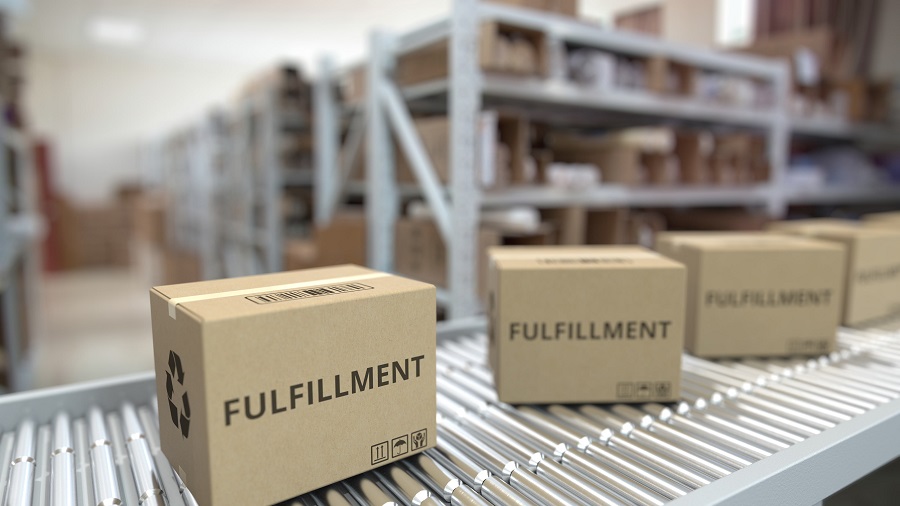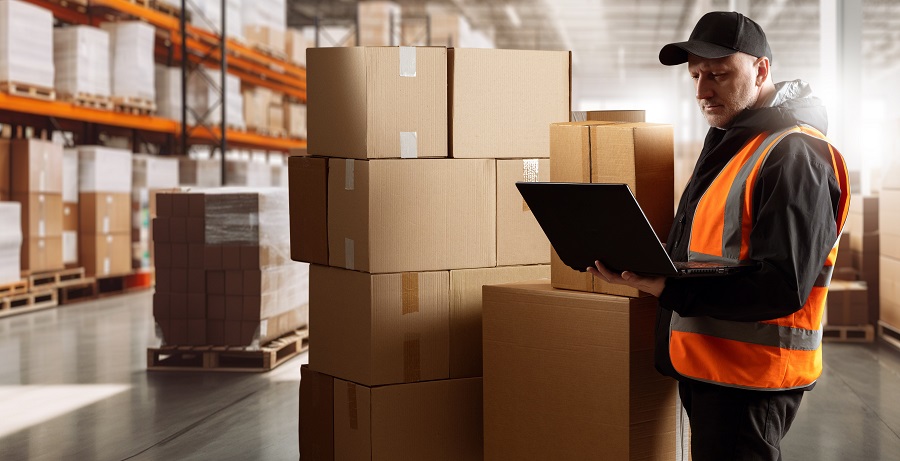20 Feb

In today’s omnichannel retail landscape, offering a seamless shopping experience across physical and digital channels is key to staying competitive and driving sales and fulfillment. As more customers expect the ability to browse, buy, and fulfill orders however they choose, retailers must optimize their in-store fulfillment capabilities to meet rising consumer demands. Read on to find out.
What is retail fulfillment?
Retail fulfillment refers to the process of receiving, packaging, and delivering orders to customers. Whether online or in brick-and-mortar stores, fulfillment directly impacts things like inventory accuracy, shipping times, and overall customer satisfaction.
For many modern retailers, especially those with an ecommerce component, fulfillment involves coordinating complex omnichannel strategies across websites, mobile apps, physical store networks, and more. The goal is to not only meet customer delivery expectations but to do so profitably and sustainably over time.
Why retail fulfillment matters?
Efficient retail fulfillment confers many bottom-line benefits:
- Reduces overhead costs through optimized staffing, supply chain, and logistics
- Drives loyalty by delivering consistent, personalized post-purchase experiences
- Unlocks new revenue with value-added services like gift wrapping and customization
- Improves cash flow with faster order processing and delivery times
- Provides insight through data on fulfillment performance and customer preferences
Simply put, fulfillment is the engine that keeps the retail machine humming. Fine-tuning your operations directly translates to sales and revenue gains.
Also Read: Optimize Your Checkout Process for More Sales
How to optimize retail fulfillment?
Improving fulfillment in retail starts with an audit of current processes and pain points. Look for areas of friction and waste that impact order accuracy, speed, and scalability.
Map out the fulfillment process
Document each step involved in fulfilling orders, both for ecommerce and in-store purchases. Look for opportunities to streamline. For example:
Inventory management: Consider radio frequency identification (RFID) to track inventory in real time. This reduces counts and availability errors.
Picking and packing: Use automation and optimized warehouse layouts to reduce travel distance and time.
Shipping: Negotiate discounted rates with carriers to reduce outbound shipping costs.

Choose the right retail fulfillment model
Retailers have a choice of retail fulfillment solutions for managing order fulfillment:
In-house: Keeping fulfillment in-house allows for greater quality control and customization. But it also comes with overhead costs for staffing, real estate, etc.
3PL providers: Third-party logistics (3PL) providers offer outsourced picking, packing, shipping, and customer service. This saves on overhead but reduces flexibility.
Dropshipping: Order fulfillment is handled directly by suppliers or manufacturers, who ship directly to customers. This slashes workload but also visibility.
Evaluate which model(s) to use based on product mix, order volume, and business priorities like cost, control, and scalability.
Leverage technology
Technology is key to efficient retail fulfillment, from automated warehouses to analytics dashboards.
Order management software: Tracks and optimizes fulfillment tasks from order taking to last-mile delivery.
Warehouse management: Tools for inventory and labor management, productive routing, shipping optimization, and more.
Visibility tools: Give real-time insight into fulfillment performance through key metrics dashboards.
Choose systems capable of seamlessly integrating across sales channels, suppliers, and logistics providers.
Also Read: How to Double Your Sales With POS System?
How to improve in-store fulfillment?
For retailers operating physical stores, in-store fulfillment can be a powerful sales driver.
When customers can buy online and pick up in-store—or vice versa—it generates additional foot traffic while providing convenient, timely fulfillment.
Here are some tips to maximize store-based fulfillment:
Offer BOPIS and curbside pickup
BOPIS stands for buy online, pick up in-store. This popular fulfillment option allows online purchases to be picked up at a nearby retail location.
Curbside pickup is a variant where customers collect purchases from designated parking spaces without entering the store—a plus for convenience and safety.
To enable BOPIS and curbside fulfillment:
- Designate staging areas for picking and packing digital orders
- Ensure sufficient parking and signage for curbside spots
- Train store staff on protocols for order retrieval and customer hand-offs
Make pickups fast and frictionless by sending customer alerts for order readiness and designated parking.
Centralize inventory across channels
Don’t silo inventory for online, in-store, and wholesale channels. Instead, take an omnichannel approach:
- Unify warehouse and store stock into a centralized inventory system
- Make all inventory visible and accessible across channels
- Allow online orders to be fulfilled from store stock, and vice versa
This gives maximum flexibility to ship purchases from the most efficient location while minimizing stockouts.
Ship from store
Take store-based fulfillment a step further by designating certain outlets as mini shipping hubs.
- Equip participating stores for packing, labeling, and shipping functions
- Set up procedures for store staff to handle online order fulfillment
- Provide visibility tools to view store inventory levels in real-time
Fulfilling ecommerce orders from the nearest available store location helps slash shipping times and last-mile delivery costs.
Fulfillment delivers sales impact
As the final step in the retail chain, fulfillment bears directly on customer experience and lifetime value.
Fine-tuning your operations in areas like inventory and order management, in-store picking, and delivery capabilities can ultimately drive revenue, loyalty, and growth.
The good news is that continuous improvements add up. Retail fulfillment solutions exist to fit needs across the spectrum—from budget shops to high-volume chains. One powerful option to consider is Hana Retail. We provide a modern, real-time retail POS system for managing in-store and online sales, inventory, merchandising, and more. Sign up FREE today!





